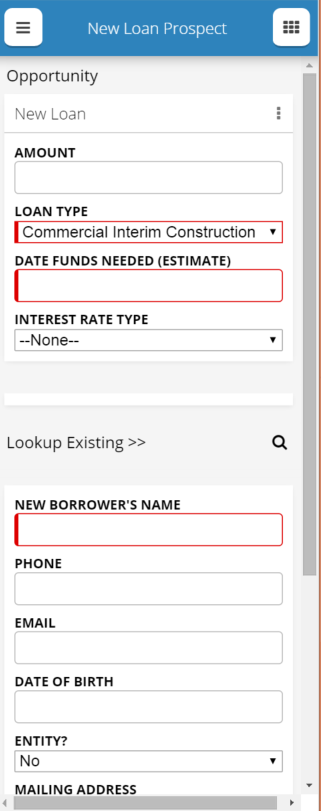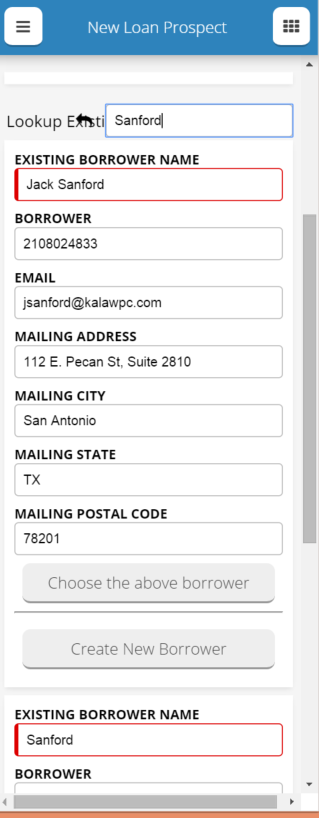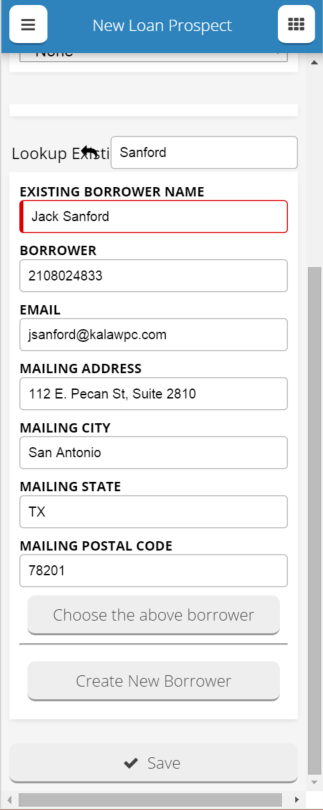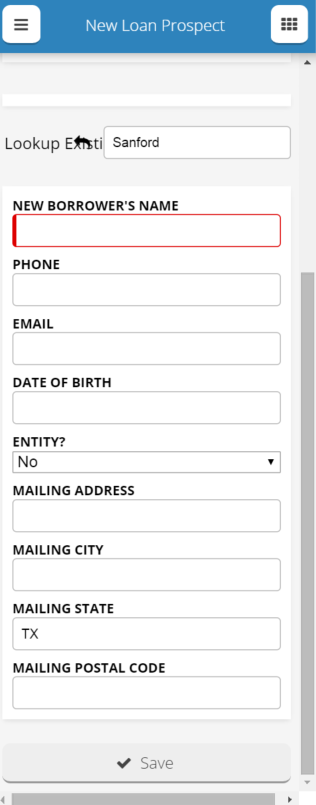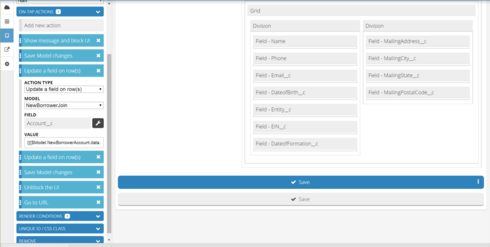Creating our first mobile page (woo-hoo!) which is a page for someone to use in the field to capture a new loan prospect. The page will create a new Opportunity, a new Account, and a new join object to link the Opp and Account together.
After filling out basic Opp info like Amount and Close date, we want the user to be able to type in the new potential borrower’s name and have that initiate a search in the database, like auto-fill. And if none found it creates a new one.
I don’t think this is exactly possible, but are there any ideas for elegant solutions here?
Two not so elegant that I’ve thought of:
1) allow the Deck where the new account fields are to have a Search function, but since my model is set to not load model data on page load, search doesn’t seem to be working, in fact it freezes up completely when I try and search
2) install some de-dupe something on the back-end so that when they create a new account that already exists it merges the two. Besides being a lot of work, this doesn’t let the user skip entering data that we might already have, like email, phone, etc. Ideally all of that would load into the editable Deck when an existing account is found.
Thanks!
-
Question
How to allow search for existing accounts before adding new account in mobile page?
 +11
+11This topic has been closed for replies.
Enter your E-mail address. We'll send you an e-mail with instructions to reset your password.




